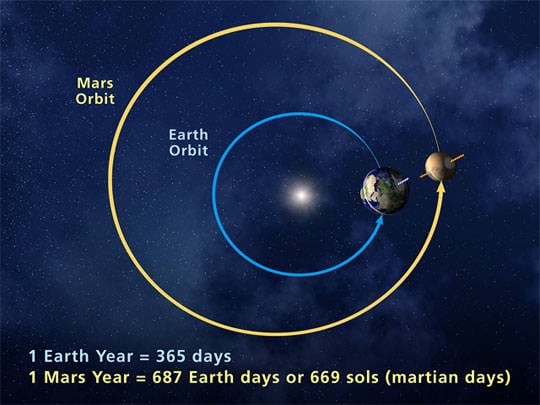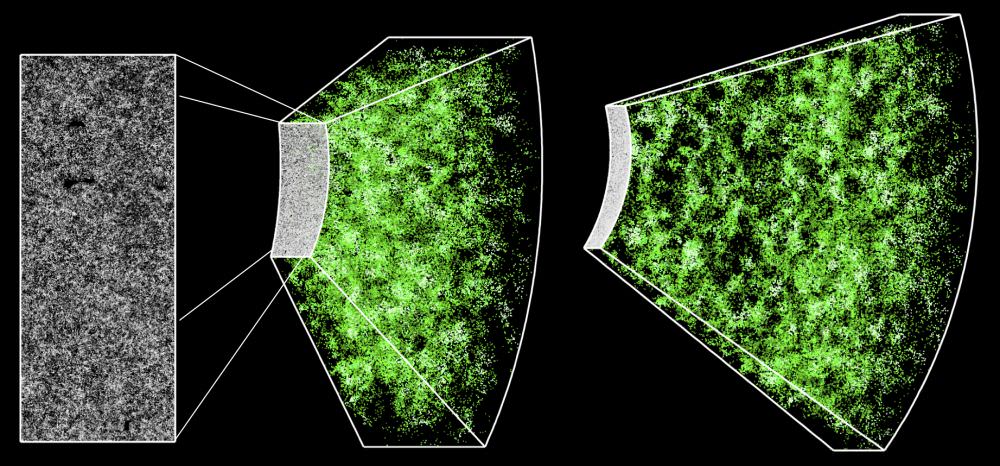
The Bohr atomic model (sometimes known as the Rutherford-Bohr atomic model) was a major milestone in the development of modern atomic theory
Continue reading

Set your alarm for Friday morning at dawn when the crescent Moon will either cover up, barely miss or pass in splendid conjunction with Aldebaran, the brightest star in Taurus.
Continue reading

Scientists at NASA"s Goddard Space Flight Center are developing the photon sieve, a small, inexpensive device designed to study the Sun's corona
Continue reading

CAPE CANAVERAL AIR FORCE STATION, FL — The nation's newest surveillance satellite is all set for a brilliant breakfast blastoff on Thursday July 28 atop a powerful Atlas V rocket from the Florida Space Coast - and both the booster and weather are in excellent shape at this time!
Continue reading

In both the course of a year, and over the course of millennia, Earth experiences variations due to the fact that its axis is tilted
Continue reading

Continue reading

Scientists have found a bit of a mystery at the dwarf planet Ceres. In the rough and tumble environment of the asteroid belt, ancient Ceres was certainly pummeled by numerous large asteroids during its 4.5 billion-year lifetime. But yet, there are just a few large craters on found there.
Continue reading

Mars is not only further from the Sun than Earth, but has an eccentric orbit that leads to a great deal of variation in its seasons and surface temperature
Continue reading

Catch a rare conjunction of Mercury with the Moon next week, and an occultation for a very privileged few.
Continue reading

For the remainder of 2016, all payloads traveling to the US National Lab aboard the ISS will feature a mission patch with Marvel characters
Continue reading

Astronomers have theorized there could be an intermediate stage between neutron stars and black holes called quark stars. Are they out there?
Continue reading

Located in the southern Sagittarius constellation is the Trifid Nebula, a bright star-forming region and combination nebula
Continue reading

A comparison between the rocket that delivered the Apollo astronauts to the Moon, and the one that promises to deliver astronauts and colonists to Mars
Continue reading

MICHOUD ASSEMBLY FACILITY, NEW ORLEANS, LA - NASA has just finished welding together the very first fuel tank for America's humongous Space Launch System (SLS) deep space rocket currently under development - and Universe Today had an exclusive up close look at the liquid hydrogen (LH2) test tank shortly after its birth as well as the first flight tank, during a tour of NASA's New Orleans rocket manufacturing facility on Friday, July 22, shortly after completion of the milestone assembly operation.
Continue reading

Continue reading

The asteroid that punched an "eye" in the Moon is about 10 times more massive than originally thought. Researchers say a protoplanet-sized body slammed into the Moon about 3.8 billion years ago, creating the area called Imbrium Basin that forms the right eye of the so-called "Man in the Moon."
Continue reading

With a long history of contributing to space exploration, the Canadian Space Agency is looking for the next generation of Canadian astronauts
Continue reading

With the upcoming test of the Falcon Heavy rocket, SpaceX is looking to expand its facilities by introducing two new landing pads
Continue reading

Jupiter's iconic Great Red Spot is a huge cyclonic storm big enough to swallow the Earth. But it's been getting smaller over time, while other storms have been growing. What does the future hold for this Jupiterricane?
Continue reading

Continue reading

We toast the 40th anniversary of the dual Viking missions to Mars this week. Time to celebrate an achievement that gave us our first visceral feeling of standing on another planet.
Continue reading

Looking for a way to commemorate the 47th anniversary of the Apollo 11 mission landing on the Moon? Here are a few different ways look back on this historic event and take advantage of advances in technology or new data.
Continue reading

KENNEDY SPACE CENTER, FL - Following a flawless post midnight blastoff two mornings ago, a pair of NASA astronauts executed a flawless capture of the newest SpaceX Dragon supply ship at International Space Station early this morning, July 20, carrying 2.5 tons of priceless research equipment and gear for the resident astronauts and cosmonauts.
Continue reading

Venus' orbit has some strange properties, which includes taking 243.025 days to rotate once, and the fact that it rotates backwards compared to Earth
Continue reading

Some of the greatest discoveries in astronomy have been made by watching how the skies change over time. Today we talk about these techniques, and an observatory that will revolutionize time-based astronomy.
Continue reading

Continue reading

Hosting an evening star party this summer? Then you're in for a treat. Starting this week, all five naked eye planets (Mercury, Venus, Mars, Jupiter and Saturn) are visible in the evening sky at dusk for a bried few weeks.
Continue reading

Continue reading

As part of their Journey to Mars, NASA has unveiled the compact exercise system its astronauts will use to stay healthy during the trip
Continue reading

Located in the constellation of Ophiuchus, some 28,700,000 light years from Earth, lies the faint globular cluster known as Messier 19
Continue reading

A look at the Solar Systems largest planet (Jupiter) and how it stacks up in terms of size, mass, satellites, and composition to our home planet
Continue reading

Get ready to tune in the Red Planet on your earbuds. NASA recently announced that it would include a microphone in its Mars 2020 Mission.
Continue reading

KENNEDY SPACE CENTER, FL - The outlook is outstanding for a dramatic midnight blastoff of the next SpaceX commercial cargo Dragon jam packed with some 5000 pounds of critical payloads and research supplies for NASA and heading to the space station on Monday, July 18 - that also simultaneously features an experimental land landing that promises to rock loudly across the Florida space coast and one day slash launch costs.
Continue reading

After a decade of research, the Baryon Oscillation Spectroscopic Survey has released the most detailed 3D map of the Universe to date
Continue reading

Images from NASA's Solar Dynamics Observatory have spotted a growing dark region called a coronal hole, which is the cause of high-speed solar winds that can disrupt satellite communications.
Continue reading

In the northern skies, flanked by the Big Dipper, lies the Bootes constellation, one of the traditional constellations listed by Ptolemy
Continue reading

Using carbon nanotubes, a team of NASA engineers has created a series of revolutionary new telescope mirrors for a Cubesat telescope
Continue reading

Continue reading

NASA's newly arrived Jovian orbiter Juno has transmitted its first imagery since reaching orbit last week on July 4 after swooping over Jupiter's cloud tops and powering back up its package of state-of-the-art science instruments for unprecedented research into determining the origin of our solar systems biggest planet.
Continue reading

Galileo's telescope, an instrument he made himself and used to revolutionize astronomy, still manages to inspire us today
Continue reading

The EPIC camera on-board NASA's Deep Space Climate Observatory (DSCOVR) has captured images of the Moon passing in front of the Earth as the Earth rotates behind it.
Continue reading

The Milky Way Galaxy is a very, very big place. And figuring out where Earth resides inside of it has been no simple task
Continue reading

The SABRE (Synergistic Air-Breathing Rocket Engine) being developed for the European Space Agency could be ready for test firing in four years.
Continue reading

Thanks to the ESA's Cluster mission, scientists now know that part of the plasma found in our magnetosphere is coming from us!
Continue reading

Stars can spin faster or slower than the Sun. What's the fastest that's ever been discovered, and what's the fastest speed you can have before they tear themselves apart?
Continue reading

A dwarf planet has been discovered beyond Neptune. It's about 700 km in size, and its orbit takes it 120 times further from the Sun than the Earth is.
Continue reading

Continue reading

In the far-flung system of CVSO 30, two planetary candidates have been found with very different orbits - presenting new opportunities for exoplanet study
Continue reading

A flawless shakedown mission from Russia's newly modified Soyuz capsule successfully delivered a new multinational crew to the Space Station early Saturday, July 9 after a two day orbital chase.
Continue reading

Continue reading

 Universe Today
Universe Today















































